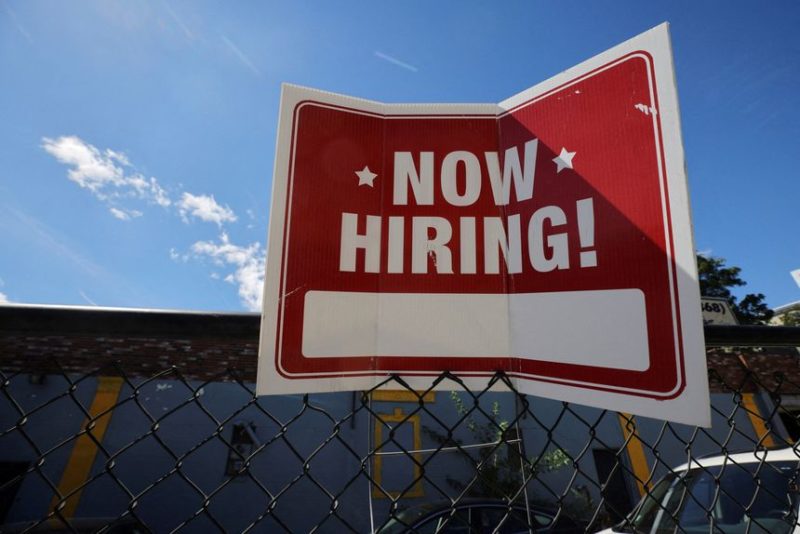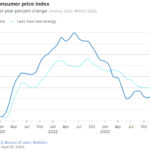After a strong jobs report, traders are betting the Fed might raise interest rates two more times this year
The U.S. labor market remains incredibly strong. Investors can’t decide if that is a good or bad thing.
At first glance, Friday’s jobs report seemed to have very little for money managers to dislike. The U.S. economy added a whopping 517,000 jobs in January, while the unemployment rate fell to its lowest level since 1969, according to Labor Department data.
With employers ramping up hiring across industries from hospitality to healthcare to retail, investors say it is difficult to imagine the U.S. slipping into recession soon—presumably a good thing for risky assets such as stocks.
Yet, as has been the case for much of the past year, some investors took away a different story. They worry that good news for the economy might in fact be bad news for the markets if it pushes the Federal Reserve to tighten monetary policy more than they expect.
Following the release of the report, traders increased bets that the Fed will raise interest rates two more times this year, instead of just once more, according to data from CME Group. Traders also bet the Fed will push interest rates higher than they had thought before the jobs report, according to FactSet, something that could ultimately put more pressure on markets.
Stocks tumbled at Friday’s opening bell, only for the Dow Jones Industrial Average to recover those losses—and then trade lower once again. The index suffered a modest 0.2% decline for the week, trimming its gains for the year to 2.3%. The broader S&P 500 has climbed 7.7% in 2023.
Bond prices fell after the jobs report, with the 10-year U.S. Treasury yield rising to 3.531% from 3.396% Thursday in its biggest one-day climb since October.
“There’s still so much uncertainty about the Fed, and that should give investors a little bit of pause,” said Brad Bernstein, managing director at UBS Wealth Management.
This week, investors will get a look at data on consumer sentiment and hear from Fed Chair Jerome Powell, who is scheduled to make remarks Tuesday at the Economic Club of Washington, D.C.
Bets that the Fed will begin cutting interest rates by the second half of the year helped assets from stocks to junk bonds to cryptocurrencies soar in January. Friday’s declines marked a pause of sorts for that rally. Technology stocks came under extra pressure after a round of disappointing earnings reports from the previous evening.
Shares of Amazon.com Inc. slumped 8.4%, a day after the e-commerce giant warned it was likely to see its growth slow down over the next few quarters. Alphabet Inc. fell 2.7% after Google reported its first drop in advertising revenue since the beginning of the pandemic.
“When too many people get on the same side of the boat, it tends to flip over,” said Randy Frederick, managing director of trading and derivatives for the Schwab Center for Financial Research.
Much of the uncertainty around where the Fed will take policy stems from the fact that the central bank says it doesn’t have a precise idea of when it will pause on its interest-rate increases or begin easing monetary policy.
“I don’t think there’s…going to be a light switch flipped or anything like that,” Mr. Powell said at a news conference this past week when asked what would constitute sufficient evidence for the central bank that inflation was coming down.
Mr. Powell added that he didn’t want to specify a number of months inflation would have to decline before the Fed would decide to change its interest-rate policy. Commerce Department data this past month showed the personal-consumption expenditures price index, the Fed’s preferred measure of inflation, rising at the slowest annual pace since October 2021 when excluding food and energy prices.
The Fed can’t confidently predict the future because, like investors, it can only make its best guess as to what data will show over the coming year, UBS Wealth Management’s Mr. Bernstein said. That makes piling into bets that are contingent on Fed policy going one way or another this year look especially risky, he added.
Given the lingering questions around Fed policy, some say markets look overconfident at the moment.
“It’s one thing to pause the hiking cycle. It’s another thing to actually start delivering rate cuts,” said Jeremy Schwartz, senior U.S. economist at Credit Suisse Group AG. The bank is expecting the S&P 500 to finish the year at 4050, just 5.5% above where it ended 2022. The S&P 500 closed at 4136 Friday.
For the Fed to begin cutting rates this year, Mr. Schwartz believes one of two scenarios must materialize: a severe recession or convincing evidence that inflation will fall back down to the central bank’s 2% target in the near future.
Source: wsj.com












